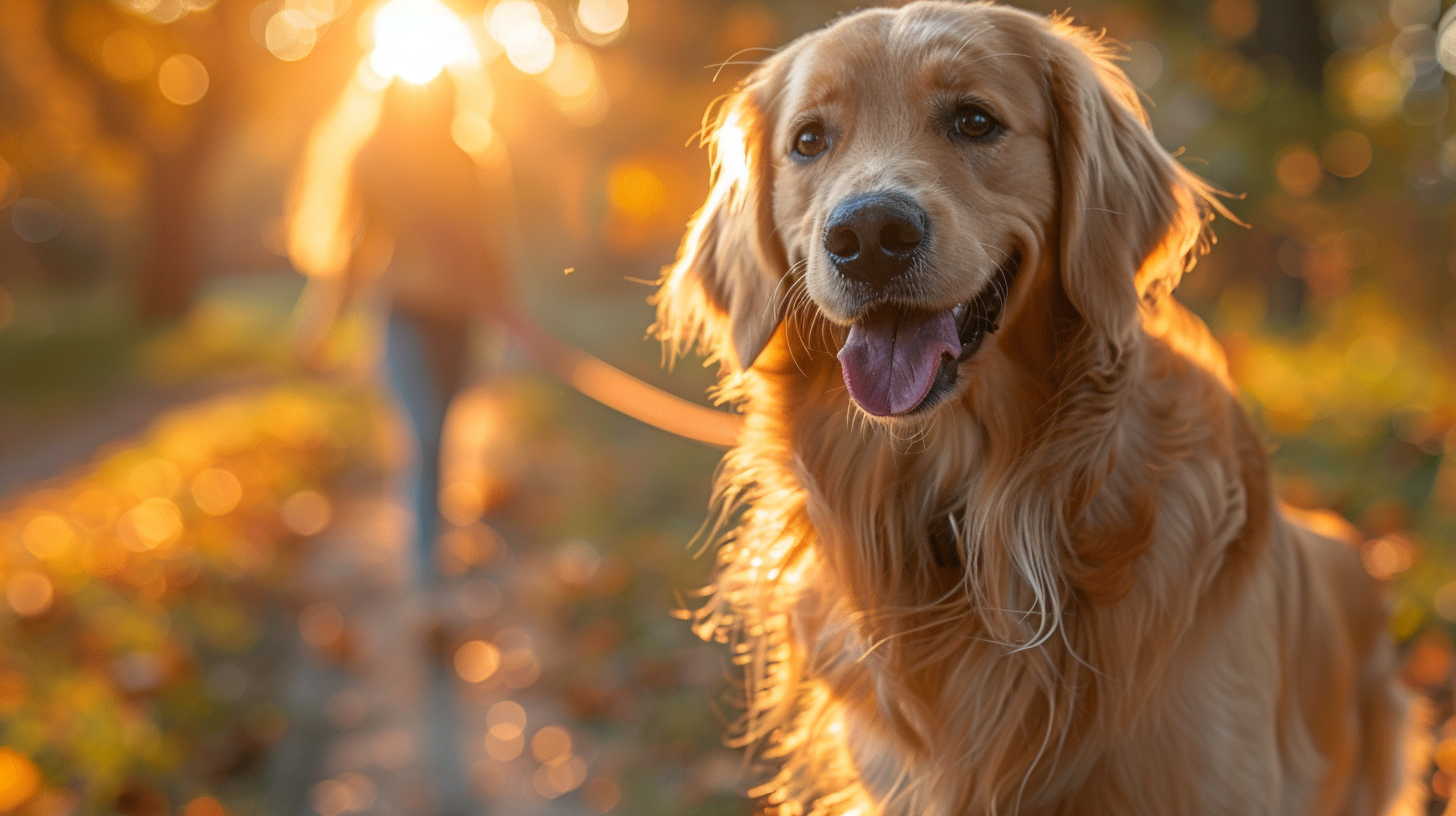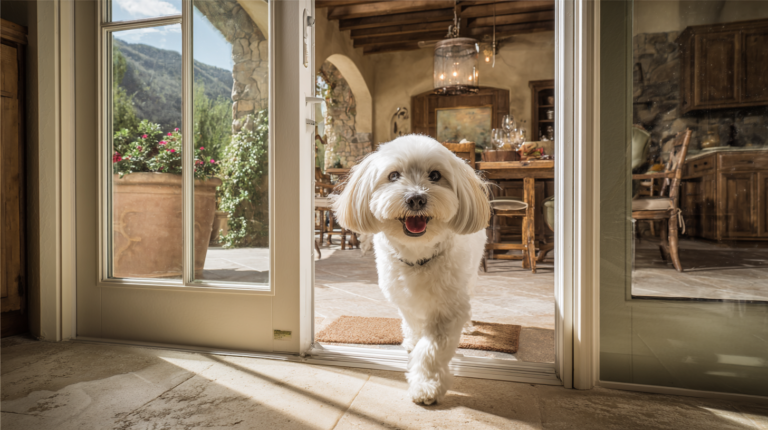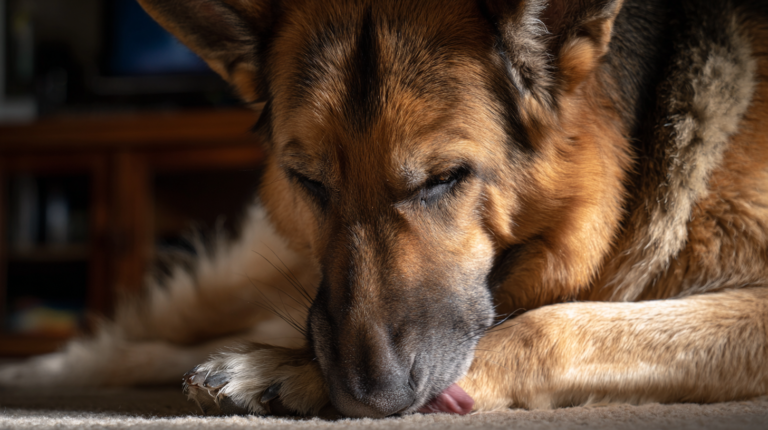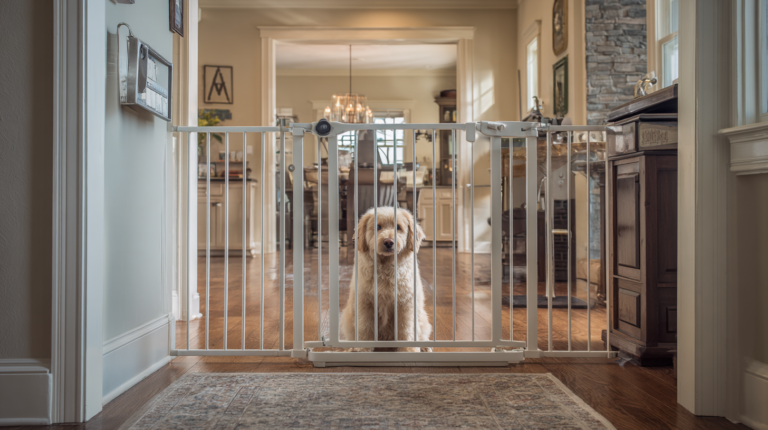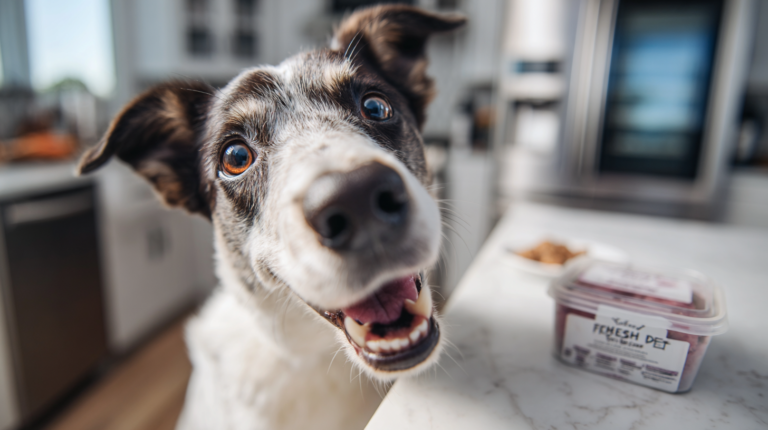Discover 3 effective dog leash training techniques that transform chaotic walks into enjoyable experiences. Master loose leash walking with our expert guide!
Table of Contents
Introduction: Transforming Your Dog Walking Experience
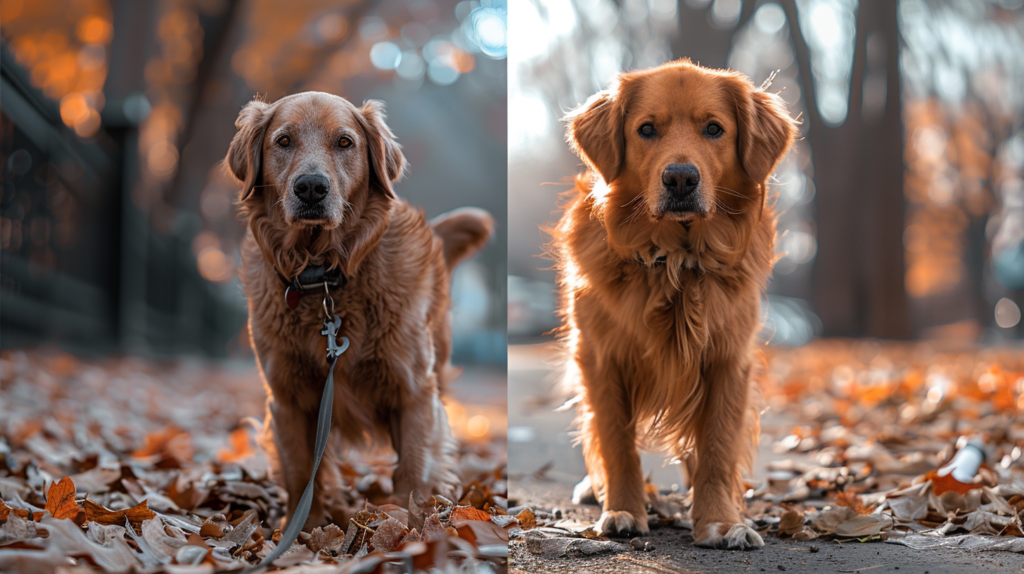
Do you dread daily walks because your furry friend turns into a pulling machine the moment the leash comes out? You’re not alone. Proper dog leash training is one of the most common challenges pet parents face, yet it’s also one of the most important skills to master for both you and your canine companion’s safety and enjoyment.
According to the American Veterinary Medical Association, nearly 70% of dog owners report leash-related problems as their top training concern. These issues range from constant pulling and lunging to reactivity toward other dogs or people. Not only can poor leash manners make walks stressful, but they can also lead to physical injuries for both you and your pet.
The good news? With consistent training and the right techniques, almost any dog can learn to walk politely on a leash. This comprehensive guide will walk you through three proven, force-free dog leash training methods that will transform your daily walks from chaotic tugging matches into peaceful, enjoyable bonding experiences.
Why Proper Dog Leash Training Matters
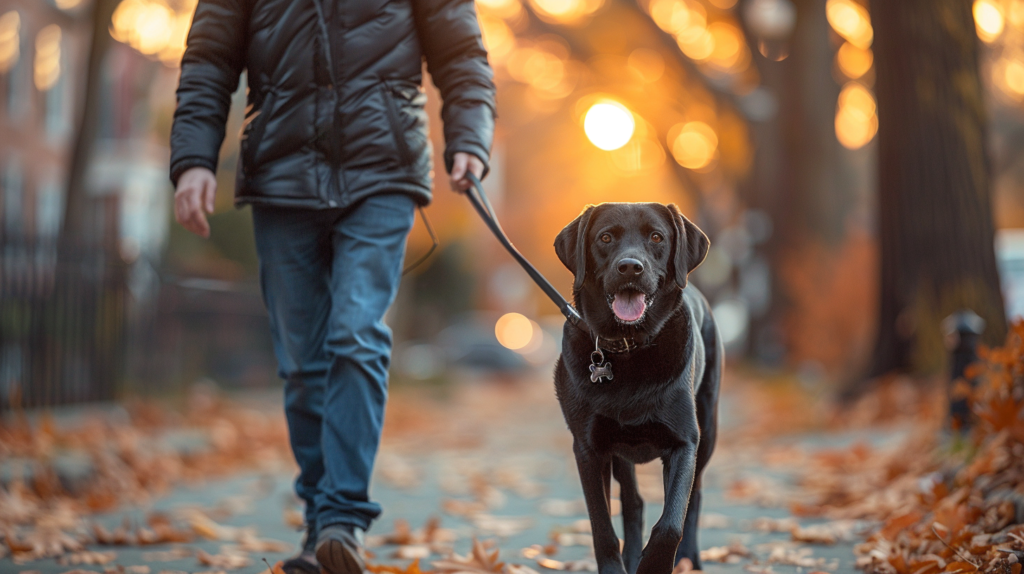
Before diving into specific techniques, let’s understand why mastering leash skills is so crucial for you and your four-legged friend.
Safety First
A well-trained dog who walks calmly on leash is less likely to:
- Dart into traffic
- Approach aggressive dogs
- Run toward potential hazards
- Pull you off balance (especially important for elderly owners or children walking dogs)
According to a study published in the Journal of Veterinary Behavior, proper leash training can reduce walking-related incidents by up to 75%.
Better Physical and Mental Health
Regular, stress-free walks provide:
- Essential exercise for weight management
- Mental stimulation through environmental exploration
- Reduced anxiety and destructive behaviors
- Strengthened human-canine bond
Social Advantages
A well-behaved leash walker:
- Makes a positive impression in your community
- Can be welcomed in more public spaces
- Causes less stress for other dog owners and pedestrians
- Creates more opportunities for positive socialization
Dr. Sarah Wilson, veterinary behaviorist at Cornell University, notes: “Dogs that learn proper leash etiquette show significantly lower stress markers during walks and are generally more confident in public settings.”
Common Leash Training Challenges
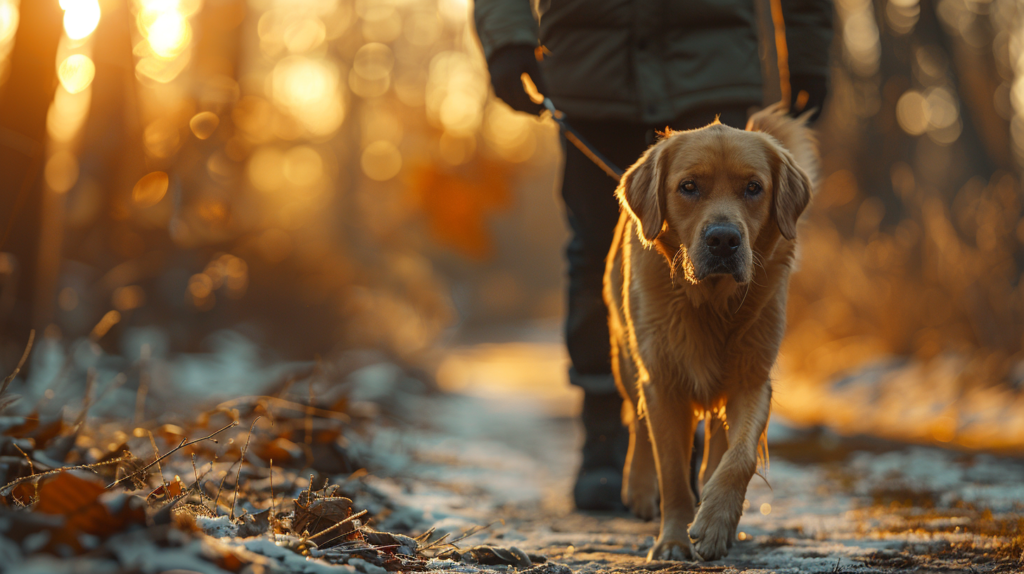
Before we explore solutions, let’s acknowledge the typical challenges that might be affecting your walking experience:
- Pulling and Lunging: The most common issue, where your dog constantly strains against the leash
- Leash Reactivity: Barking, lunging, or showing aggressive behavior toward other dogs or people while on leash
- Freezing or Refusing to Walk: When dogs plant their feet and refuse to move
- Zigzagging and Sniffing: Constant direction changes and stopping to investigate every scent
- Leash Biting: Grabbing and chewing the leash during walks
- Jumping and Excitement: Overexcitement when the leash comes out or during portions of the walk
Now, let’s discover how our three core techniques can address these challenges and establish enjoyable walking routines.
Technique 1: The Stop-and-Go Method
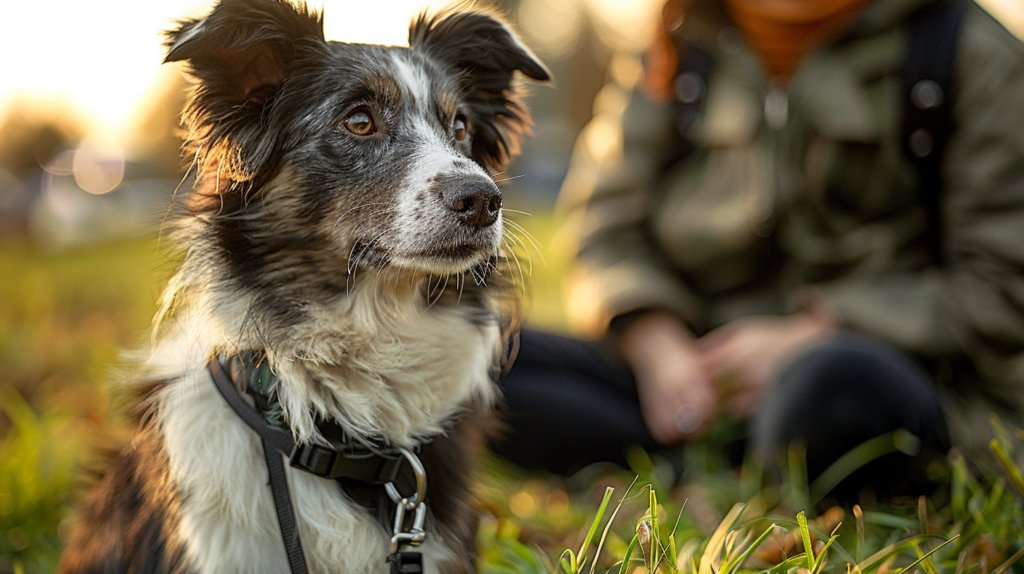
The Stop-and-Go method is simple yet highly effective for teaching dogs that pulling doesn’t get them where they want to go. This technique leverages natural consequences rather than force or punishment.
How It Works
- Begin Your Walk: Start walking with your dog on a loose leash.
- Stop Immediately When Pulling Occurs: The moment your dog begins to pull, stop walking completely.
- Wait for Slack: Stand still and wait until your dog creates slack in the leash, either by turning to look at you or backing up slightly.
- Resume Walking: Once the leash is loose, immediately resume walking as a reward.
- Repeat Consistently: Continue this pattern throughout your walks.
Expert Tips for Success
- Patience is Crucial: In the beginning, you might only walk a few steps before stopping again. That’s normal and part of the learning process.
- Use High-Value Rewards: Carry small, tasty treats to reward moments of good leash walking.
- Practice in Low-Distraction Areas First: Start in your yard or a quiet street before progressing to more stimulating environments.
- Keep Sessions Short: Initially, 10-15 minute training sessions are more effective than long, frustrating walks.
Case Study: Max’s Transformation
Max, a 3-year-old Labrador Retriever, would pull so hard during walks that his owner Laura developed shoulder pain. After implementing the Stop-and-Go method consistently for three weeks, Max learned that pulling resulted in stopping—the opposite of what he wanted.
The first week was tough, Laura admits. Our 30-minute walk route took nearly an hour as we kept stopping. But by the third week, Max was checking in with me regularly and maintaining a loose leash about 80% of the time. Now our walks are actually enjoyable!
When This Technique Works Best
The Stop-and-Go method is particularly effective for:
- Moderately to highly energetic dogs
- Dogs who pull consistently throughout walks
- Younger dogs just learning leash manners
- Owners who can remain patient and consistent
According to a 2023 survey by the Association of Professional Dog Trainers, this method showed a 65% success rate when applied consistently for at least three weeks.
Technique 2: The Direction Reversal Method
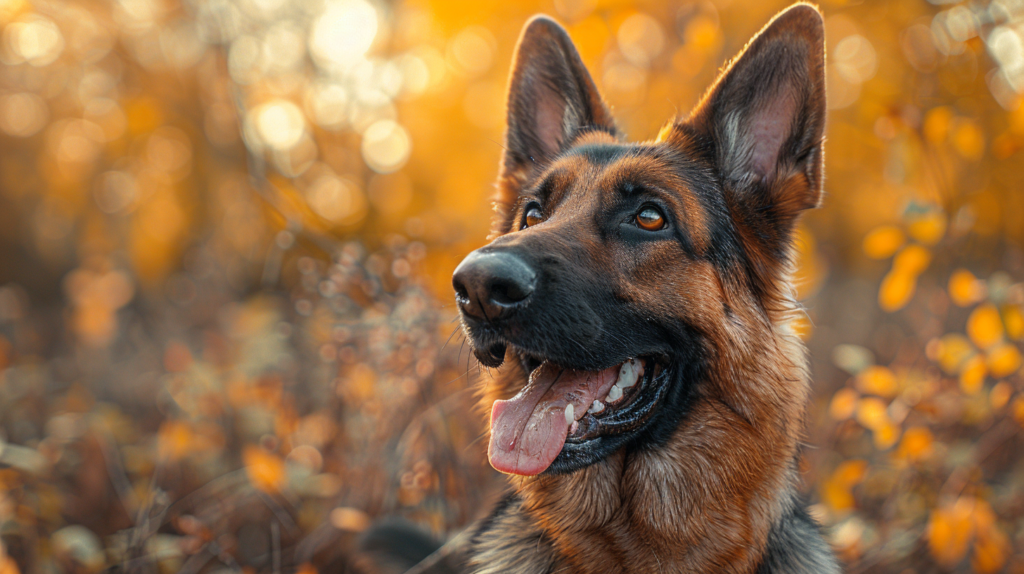
Also known as the “Be a Tree and Change Direction” technique, this method teaches your dog to pay attention to your movements and follow your lead rather than forging ahead.
How It Works
- Walk Normally: Begin walking with your dog on a loose leash.
- When Pulling Begins: Instead of stopping, immediately change direction (180 degrees).
- Use a Verbal Cue: As you turn, give a cheerful verbal cue like “This way!” or “Let’s go!”
- Reward Attention: When your dog catches up and focuses on you, praise and occasionally treat.
- Continue Walking: Resume in the new direction until pulling occurs again.
- Repeat as Needed: Be prepared to change direction multiple times during initial training sessions.
Step-by-Step Implementation
| Step | Action | Dog’s Response | Training Goal |
| 1 | Begin walking normally | Dog walks with loose leash | Establish baseline |
| 2 | When dog pulls, immediately turn 180° | Dog initially confused | Create pattern interruption |
| 3 | Use cheerful voice cue: “This way!” | Dog follows new direction | Associate verbal cue with direction change |
| 4 | Praise when dog catches up | Dog learns to pay attention | Reinforce attentiveness |
| 5 | Continue pattern throughout walk | Dog begins anticipating changes | Develop sustained focus |
Key Benefits
- Teaches dogs to monitor your position and movement
- Creates unpredictability that keeps dogs engaged
- Reduces pulling without requiring perfect behavior immediately
- Adds mental stimulation to physical exercise
- Establishes you as the leader of the walk
Certified dog trainer Megan Walsh explains: “Direction changes create a mental reset for dogs who get fixated on moving forward. It breaks the cycle of pulling and teaches them that staying tuned in to the handler is more rewarding than charging ahead.”
Success Story: Bella’s Progress
Bella, a young and enthusiastic Australian Shepherd, would constantly pull toward exciting smells and potential squirrel sightings. Her owner implemented the Direction Reversal method, changing direction each time Bella pulled.
“The first few walks were like a drunken zigzag through the neighborhood,” her owner laughs. “But after about 10 days, I noticed Bella was actually watching me as we walked. She still gets excited, but now she checks in frequently and responds immediately when I change direction. It’s like we’re finally communicating during our walks.”
Pro Tips for Maximum Effectiveness
- Stay Upbeat: Keep your energy positive during direction changes
- Be Unpredictable: Sometimes change direction even when your dog isn’t pulling
- Use Varied Turns: Mix 180-degree turns with 90-degree turns to keep your dog engaged
- Incorporate Random Stops: Occasionally stop and ask for a sit to further encourage attention
- Gradually Increase Challenge: Once basics are mastered, practice in more distracting environments
Technique 3: The Focus and Reward Method
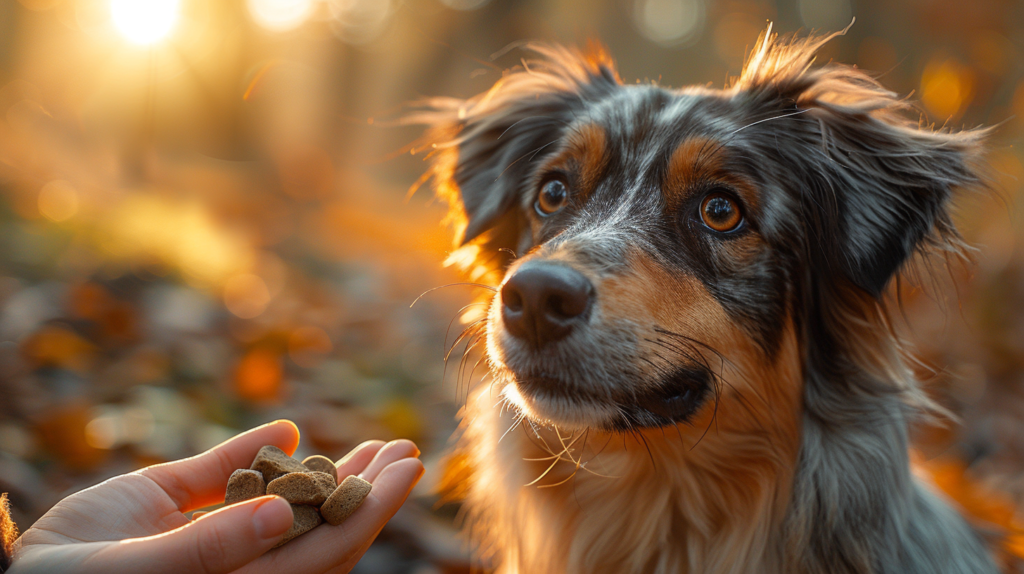
This positive reinforcement-based approach teaches dogs that walking nicely by your side is more rewarding than pulling ahead. It’s particularly effective for food-motivated dogs and those who respond well to praise.
How It Works
- Load the Marker: Before walking, establish a marker word (like “Yes!”) or clicker that signals reward is coming.
- Position Treats Properly: Hold small, high-value treats in your walking hand.
- Mark and Reward Position: As you walk, mark and reward your dog whenever they’re in the desired position (beside you with leash slack).
- Increase Duration Gradually: Initially reward every few steps, then slowly increase the distance between rewards.
- Introduce Verbal Cue: Add a cue like “With me” or “Close” to signal the desired behavior.
- Vary Reward Schedule: Once the behavior is established, switch to intermittent reinforcement.
Creating a Reward Zone
The secret to this technique is establishing a reward zone – the position where your dog earns treats. This is typically:
- Beside you (either side, but be consistent)
- With the leash loose (not tight)
- With attention at least partially on you
When your dog is in this position, they receive periodic rewards, making this spot more valuable than forging ahead.
Progressive Training Schedule
For optimal results, follow this progressive schedule:
Week 1:
- Reward every 3-5 steps when in position
- Practice in low-distraction environments
- Keep sessions under 10 minutes
Week 2:
- Reward every 10-15 steps
- Add minor distractions
- Extend sessions to 15 minutes
Week 3:
- Randomize rewards (sometimes 5 steps, sometimes 20)
- Practice in moderately distracting environments
- Begin phasing out food rewards for verbal praise occasionally
Week 4 and Beyond:
- Highly variable reward schedule
- Practice in real-world environments
- Food rewards become occasional “jackpots”
The Science Behind This Approach
Research in applied animal behavior shows that behaviors reinforced with positive rewards are learned faster and retained longer than those taught through punishment or correction. A 2022 study published in Applied Animal Behaviour Science found that dogs trained with positive reinforcement showed 73% better compliance in novel environments compared to dogs trained with other methods.
Dr. Patricia McConnell, renowned animal behaviorist, explains: “When we reward the position we want rather than punishing the pulling, we’re giving the dog clear information about what to do, not just what not to do. This clarity speeds learning and builds enthusiasm for the behavior.”
Perfect For…
The Focus and Reward method works exceptionally well for:
- Food-motivated dogs
- Puppies learning leash skills for the first time
- Rehabilitating dogs with negative leash associations
- Building a strong walking partnership
- Highly distractible dogs who need extra incentive to focus
Choosing the Right Equipment for Successful Dog Leash Training
The tools you use can significantly impact your training success. Here’s a breakdown of different leash options and their applications:
Leash Types
Standard 6-Foot Leash
- Best for: General training and everyday walks
- Advantages: Gives reasonable freedom while maintaining control
- Training tip: Ideal for all three techniques described above
Long Training Line (15-30 feet)
- Best for: Recall training and transitioning from off-leash to on-leash
- Advantages: Allows more freedom while maintaining safety
- Training tip: Not suitable for crowded areas or busy streets
Adjustable Length Leash
- Best for: Varying environments requiring different levels of control
- Advantages: Versatility for different training scenarios
- Training tip: Lock at 6 feet or less when implementing structured training
Hands-Free Leash
- Best for: Running with dogs or trainers who need free hands
- Advantages: Allows natural arm movement, good for treat delivery
- Training tip: Best after basic leash manners are established
Harness vs. Collar: Making the Right Choice
| Type | Best For | Training Benefits | Considerations |
| Front-Clip Harness | Dogs who pull; short-nosed breeds | Redirects pulling motion without strain on neck | May require adjustment to prevent chafing |
| Back-Clip Harness | Casual walks; dogs with neck issues | Comfortable for dog; distributes pressure evenly | May not discourage pulling effectively |
| Martingale Collar | Dogs with narrow heads; mild pullers | Prevents escape while being more gentle than chain collars | Requires proper fitting to be effective and safe |
| Flat Collar | Dogs who already walk well; ID purposes | Simple, comfortable for trained dogs | Not ideal for strong pullers or training phase |
Expert Insight: According to certified dog trainer Emma Thompson, “The equipment should support your training method, not replace it. A front-clip harness can reduce pulling temporarily, but without proper training, the behavior won’t improve long-term.”
Equipment to Avoid
Some equipment can damage your relationship with your dog or cause physical harm:
- Choke Chains: Can cause tracheal and esophageal damage
- Prong/Pinch Collars: Can create pain-based associations with walking
- Shock Collars: May create fear and anxiety rather than proper leash skills
- Extremely Thin Leashes: Can cause hand injuries if a dog pulls suddenly
A 2021 veterinary study found that dogs trained with aversive equipment showed significantly higher cortisol levels (stress hormones) during walks compared to those trained with positive reinforcement and appropriate equipment.
Combining Techniques for Your Unique Dog
While each method described has its merits, many successful trainers combine elements from different approaches based on their dog’s personality, learning style, and specific challenges.
Personality-Based Training Adaptations
For High-Energy, Easily Distracted Dogs:
- Primary: Direction Reversal Method to keep them engaged
- Secondary: Focus and Reward for reinforcement
- Training environment: Start in very boring locations to set them up for success
For Confident, Determined Pullers:
- Primary: Stop-and-Go to establish clear boundaries
- Secondary: Focus and Reward to make walking beside you valuable
- Equipment recommendation: Front-clip harness initially
For Nervous or Sensitive Dogs:
- Primary: Focus and Reward to build confidence
- Secondary: Gentle Direction Changes (less abrupt than full reversals)
- Training environment: Quiet, familiar areas with gradual exposure to challenges
For Senior Dogs New to Leash Training:
- Primary: Focus and Reward with higher-value rewards
- Secondary: Modified Stop-and-Go with shorter stopping periods
- Equipment recommendation: Comfortable harness that doesn’t restrict movement
Creating Your Custom Training Plan
For optimal results, create a structured plan:
- Assess Your Starting Point: Honestly evaluate your dog’s current leash behavior
- Set Clear Goals: Define what successful leash walking looks like for your situation
- Choose Primary Technique: Select the method that addresses your main challenge
- Establish Consistent Cues: Use the same words and signals each time
- Track Progress: Keep a simple log of improvements and challenges
- Adjust as Needed: Be willing to modify your approach based on results
Troubleshooting Common Leash Training Challenges
Even with the best techniques, you may encounter specific issues. Here’s how to address them:
When Your Dog Lunges at Triggers
The Challenge: Your dog walks relatively well until spotting another dog, squirrel, or person, then lunges suddenly.
Solution Approach:
- Determine Threshold Distance: Find the distance at which your dog notices the trigger but can still focus on you
- Counter-Conditioning: At this distance, reward calm behavior and attention to you when triggers are present
- Gradual Exposure: Slowly decrease distance as your dog shows comfort
- Emergency U-Turn: For unexpected encounters, master a quick direction change before reactivity begins
- Consider Professional Help: For severe reactivity, consult a certified dog behaviorist
Behavior specialist Dr. James Morton notes: “Leash reactivity often stems from frustration or fear. The leash prevents the dog from either approaching or fleeing, creating an emotional response. Systematic desensitization is more effective than punishment in these cases.”
When Progress Stalls
The Challenge: Your training was showing improvement, but suddenly your dog seems to regress or plateau.
Solution Approach:
- Check for Physical Issues: Rule out pain or discomfort that might affect walking
- Evaluate Reward Value: Your reinforcers might need upgrading for challenging environments
- Return to Basics: Go back to easier environments temporarily
- Consider Adolescence: Dogs often test boundaries during teenage months (6-18 months)
- Consistency Check: Ensure all family members are using the same techniques
For Multi-Dog Households
The Challenge: Training one dog is challenging enough; managing multiple dogs on leashes seems impossible.
Solution Approach:
- Train Individually First: Master basics with each dog separately
- Buddy System: Enlist a helper for initial training walks together
- Use Proper Equipment: Consider coupler leashes only after individual training is solid
- Practice Controlled Passing: Train dogs to walk calmly past each other with handlers
- Gradually Increase Challenge: Slowly increase walking duration and distraction level
The Journey to Leash Walking Success: Timeline and Expectations
Understanding realistic timelines helps maintain motivation during the training process. While every dog is different, here’s a general progression you might expect:
Weeks 1-2: Foundation Phase
- Behaviors: Frequent pulling, testing boundaries, inconsistent response
- Progress Signs: Brief periods of attention, occasional loose leash moments
- Focus Area: Heavy reinforcement of any correct position, very short training sessions
Weeks 3-4: Development Phase
- Behaviors: Increased awareness of your movement, pulling less frequent
- Progress Signs: Responding to direction changes, checking in occasionally
- Focus Area: Extending duration of good behavior, introducing minor distractions
Weeks 5-8: Consistency Phase
- Behaviors: Good leash manners in familiar environments, challenges in new locations
- Progress Signs: Recovery from distractions becoming quicker
- Focus Area: Proofing behavior in various environments, reducing food rewards
Months 3-6: Refinement Phase
- Behaviors: Reliable loose-leash walking in most situations
- Progress Signs: Self-correction when pulling occurs, sustained attention
- Focus Area: Maintenance, handling specific challenging scenarios
According to a longitudinal study of dog training outcomes, most owners reported satisfactory leash manners after 6-8 weeks of consistent training, with continued improvement over 6 months.
Making Leash Training Fun: Games and Exercises
Training doesn’t have to be tedious! Incorporate these engaging activities to build skills while keeping both you and your dog motivated:
“Red Light, Green Light”
This game reinforces the Stop-and-Go technique:
- Say “Green light!” and start walking
- After several steps, say “Red light!” and stop
- Wait for your dog to stop and sit or stand calmly
- Repeat, gradually increasing the walking duration
“Follow the Leader”
Perfect for reinforcing direction changes:
- Walk in an unpredictable pattern (zigzags, circles, figure eights)
- Reward your dog for staying with you through the changes
- Gradually increase speed and complexity of patterns
“Focus Walking”
Builds attention during movement:
- Choose a focus word like “Watch” or “Look”
- Ask for eye contact while standing still, then reward
- Begin walking slowly, requesting periodic eye contact
- Reward eye contact while continuing to move
- Gradually extend duration of walking between focus requests
Trainer Maria Gonzalez recommends: “Schedule specific ‘training walks’ that are separate from ‘biological walks.’ Training walks are for focused practice, while biological walks give your dog needed sniffing and exploration time. Both serve important purposes.”
Beyond Basic Leash Skills: Advanced Training Goals
Once you’ve established solid leash manners, consider these advanced skills:
Loose Leash Walking in High-Distraction Areas
Progress from quiet streets to:
- Busy sidewalks
- Parks with other dogs
- Areas with wildlife
- Pet-friendly stores
Reliable Heel Position
A formal heel (dog’s shoulder aligned with your leg) is useful for:
- Navigating crowded areas
- Crossing streets safely
- Competitive obedience activities
Polite Greetings While Leashed
Train your dog to:
- Sit calmly when approaching people
- Maintain position when other dogs pass
- Wait for permission before greeting others
Situational Awareness
Teach your dog to respond to environmental cues:
- Stopping at street corners without commands
- Moving closer in crowded areas
- Yielding space to pedestrians
Special Considerations for Different Dog Types
Puppies (8 weeks – 6 months)
Puppies have special considerations during leash training:
- Shorter Sessions: 5-10 minutes maximum
- Lighter Equipment: Use lightweight leashes and properly fitted harnesses
- Positive Associations: Focus heavily on making the leash a predictor of good things
- Growth Changes: Adjust equipment regularly as your puppy grows
- Developmental Periods: Be aware of fear periods (typically around 8-10 weeks and 6-14 months) when sensitivity may increase
Veterinary behaviorist Dr. Sophia Chen advises: “Puppies are experiencing everything for the first time. Focus more on positive exposure and basic following behaviors rather than perfect leash manners. Build a foundation of trust and willingness to stay connected with you.”
Senior Dogs
Older dogs learning leash skills require adaptations:
- Physical Limitations: Consider joint comfort and stamina
- Ingrained Habits: Be patient with breaking long-established patterns
- Reward Value: May need especially enticing treats to overcome habits
- Consistency: Even more important than with younger dogs
- Health Checks: Ensure pulling resistance isn’t due to pain
Rescue Dogs with Unknown History
Dogs with uncertain backgrounds benefit from:
- Go Slow Approach: Build trust before expecting performance
- Careful Equipment Selection: Some may have negative associations with certain tools
- Confidence Building: Incorporate reassurance and predictability
- Watch for Triggers: Be alert for signs of past trauma or fear
- Professional Support: Consider working with a trainer experienced in rescue rehabilitation
Real-Life Success Stories: Before and After
Bailey’s Transformation
Before: Bailey, a 4-year-old Golden Retriever, would pull so hard during walks that his owner Maria developed tendonitis in her wrist. Walks became a dreaded chore rather than enjoyable exercise.
Training Approach: Maria implemented the Stop-and-Go technique consistently for three weeks, then added elements of the Focus and Reward method.
After: “Now Bailey checks in with me constantly during our walks,” Maria reports. “He still gets excited about squirrels, but recovers quickly and returns to position. I can walk him with one hand holding a coffee in the other—something I never thought possible!”
Daisy’s Journey
Before: Daisy, a reactive Border Collie mix, would lunge and bark at other dogs on leash, making walks through the neighborhood extremely stressful.
Training Approach: Her owners worked with a certified trainer using a combination of the Direction Reversal method and counter-conditioning techniques specific to reactivity.
After: After four months of consistent training, Daisy can now walk past other dogs at a reasonable distance without reacting. Her owners have learned to read her body language and intervene early when needed.
Max’s Progress
Before: Max, an energetic Labrador puppy, had zero leash skills when adopted at 4 months old. Every walk was a chaotic experience of pulling, lunging at moving objects, and constant zigzagging.
Training Approach: His owner implemented the Focus and Reward method, using high-value treats and consistent positioning.
After: Within six weeks, Max learned to walk on a loose leash in low-distraction environments. By 8 months of age, he could reliably walk through the local park with minimal corrections.
FAQ: Your Dog Leash Training Questions Answered
How long does it typically take to leash train a dog?
For most dogs, you’ll see noticeable improvement within 2-3 weeks of consistent training. However, reliable leash manners in various environments typically take 2-3 months to establish firmly. Factors affecting timeline include your dog’s age, previous training history, temperament, and the consistency of your training approach.
My dog walks perfectly at home but pulls when we’re in exciting environments. What should I do?
This is a common challenge called “lack of generalization.” Dogs don’t automatically transfer skills to new environments. The solution is gradual progression: once your dog masters leash skills in your quiet neighborhood, incrementally increase environmental challenges. Practice in slightly more stimulating locations, then gradually build up to busier areas as your dog shows success.
Should I use a retractable leash for training?
Retractable leashes are generally not recommended for leash training. They teach dogs that pulling extends their reach, which contradicts the goal of loose leash walking. These leashes also provide inconsistent feedback and can be dangerous in many situations. Stick with a standard 6-foot leash for training purposes.
My small dog doesn’t pull hard enough to cause problems. Do I still need to leash train?
Yes! Even though small dogs may not physically overpower you, proper leash manners are important for their safety and your enjoyment. Small dogs with poor leash skills can be at greater risk of injury from larger dogs, may dart into traffic, or develop frustration-based behaviors. Good leash manners are important for dogs of all sizes.
What if my dog suddenly starts pulling after walking nicely?
Sudden changes in behavior warrant investigation. First, rule out physical issues—pain can cause behavior changes. Next, consider environmental factors: new distractions, changes in routine, or seasonal variations. Adolescent dogs (6-18 months) often “test boundaries” as they mature. Return to your basic training technique and be consistent until the behavior improves again.
Can older dogs learn to walk on leash properly?
Absolutely! While it may take longer to change established habits, senior dogs can definitely learn new leash skills. The key is patience and consistency. Older dogs may need more repetition and higher-value rewards to overcome years of reinforced pulling. Focus on short, positive training sessions and celebrate small improvements.
For More Expert Pet Care Tips and Product Recommendations
For more expert pet care tips and product recommendations, visit BlithePet.com — your trusted source for pet wellness.
Conclusion: Your Path to Leash Walking Harmony
With patience, consistency, and the right techniques, almost any dog can learn to walk politely on leash. Remember that leash training is not just about control—it’s about communication and building a stronger relationship with your canine companion.
The three methods we’ve explored—Stop-and-Go, Direction Reversal, and Focus and Reward—provide a comprehensive toolkit that can be customized to your dog’s unique personality and learning style. By understanding the principles behind these techniques and applying them consistently, you’ll transform chaotic walks into enjoyable journeys you both look forward to.
As you progress in your training journey, remember to:
- Celebrate small victories
- Remain patient when challenges arise
- Keep training sessions positive and upbeat
- Adjust your approach based on your dog’s responses
- Gradually increase environmental challenges
Walking in harmony with your dog represents one of the most fundamental and rewarding aspects of the human-canine relationship. The investment you make in proper dog leash training now will pay dividends in enjoyment, safety, and bonding for years to come.
Have a similar experience with your pet? Share it in the comments below!

